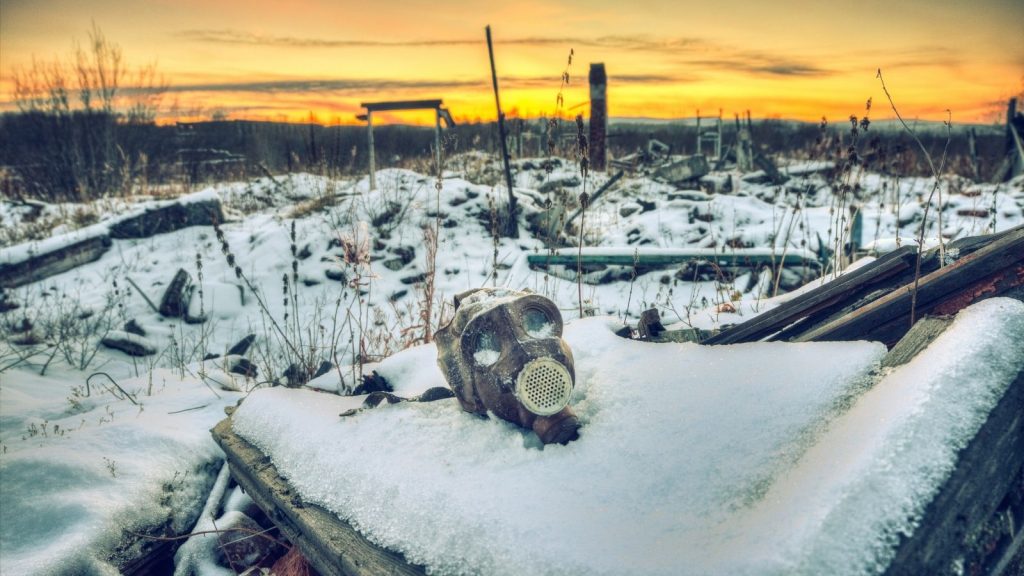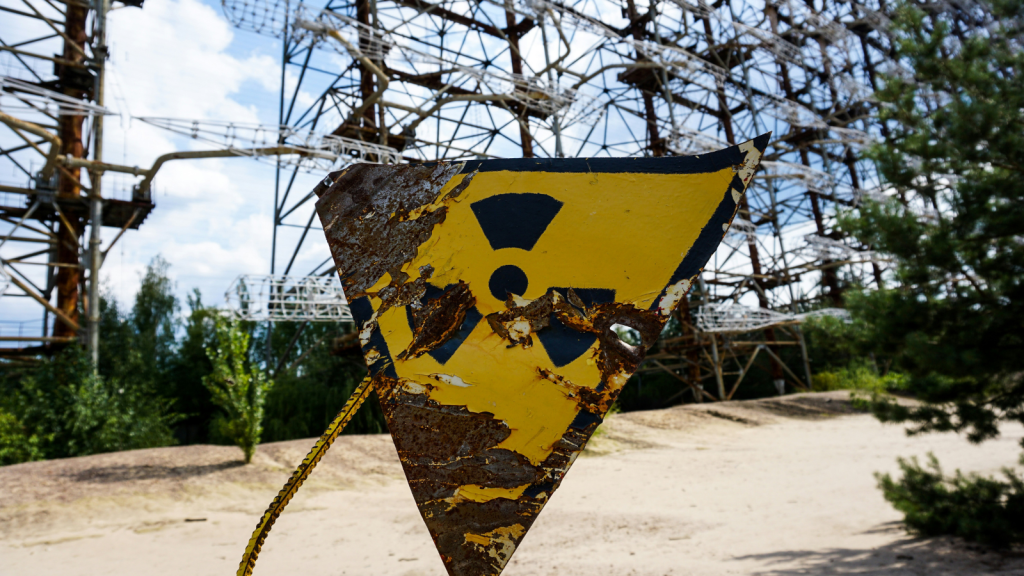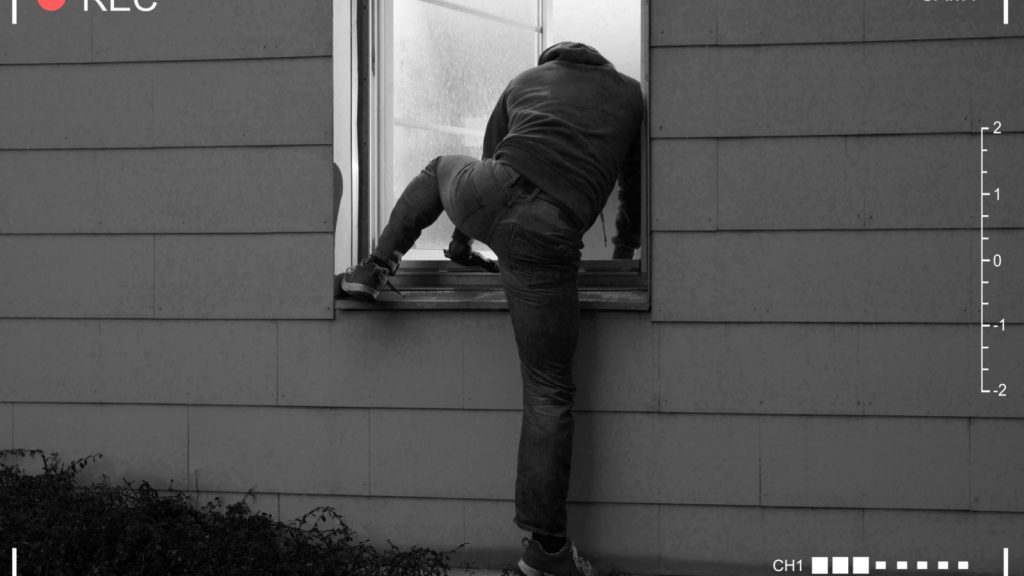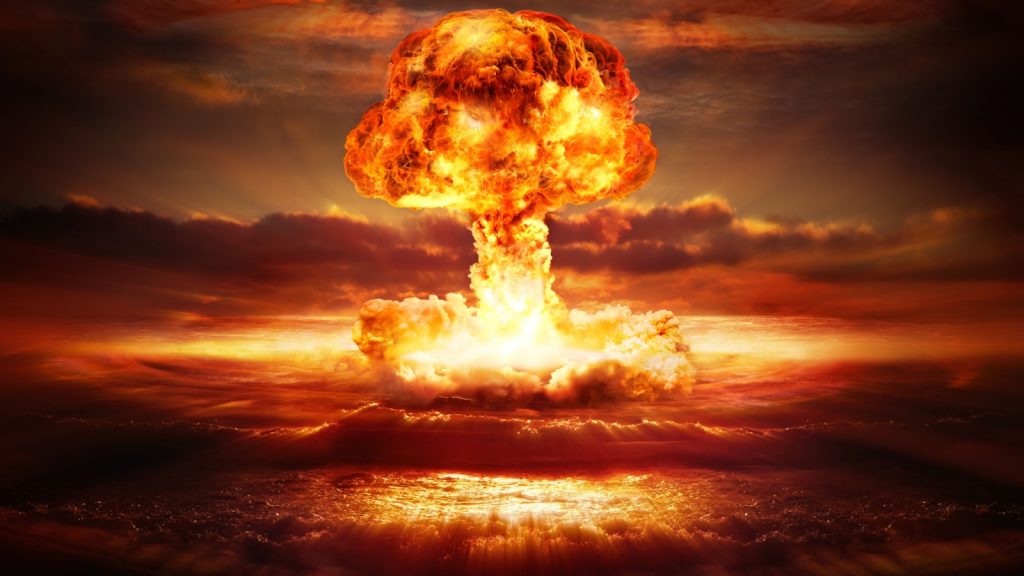After years of researching emergency preparedness and working with our local community resilience group, I’ve discovered that nuclear survival information is riddled with dangerous misinformation. Just like growing food in our clay soil required completely different methods than the standard advice, surviving a nuclear event has its own set of realities that contradict popular beliefs.
Hollywood movies and internet speculation have created a tangled web of myths that could prove deadly in an actual crisis. I’ve spent countless hours separating fact from fiction by consulting scientific sources, FEMA guidelines, and experts in radiation safety. What I’ve found is that some of the most widespread “common knowledge” about nuclear survival is dangerously wrong.

The good news? The actual, evidence-based strategies for increasing your chances in a nuclear emergency are often simpler and more accessible than you might think. And many of these preparedness steps serve double duty, helping with more common emergencies too.
1. “Duck and Cover” Isn’t Just Cold War Propaganda
When I was growing up, we often joked about those old “duck and cover” drills from the 1950s. They seemed ridiculous – how could hiding under a desk protect you from a nuclear bomb?
Turns out, those drills weren’t so silly after all. The immediate dangers from a nuclear explosion include a blinding flash that can cause permanent eye damage and an intense thermal pulse that can cause severe burns even miles from ground zero.
Ducking behind any solid object – yes, even a desk – can shield you from this thermal radiation and protect your eyes from the flash. The shockwave that follows carries debris at tremendous speeds, and being behind something solid can protect you from becoming part of that debris field. Even covering exposed skin with your clothing or arms can prevent burns.
It’s not about surviving a direct hit – nothing will help with that. It’s about improving your odds if you’re in the periphery of the blast. Sometimes the simplest actions have the biggest impact on survival.
2. Nuclear Explosions Aren’t All Created Equal
Just like how different garden plants have vastly different needs, nuclear weapons vary tremendously in their effects. A “tactical” nuclear weapon might have a destructive radius measured in a few miles, while a large strategic weapon could devastate an entire metropolitan area.
The height of the detonation also dramatically changes the effects. An airburst creates more immediate destruction but potentially less fallout, while a ground burst creates a crater and much more radioactive debris.
Understanding these differences matters because it affects your survival strategy. In our family emergency plan, we’ve mapped out different response zones based on potential blast radii from likely targets in our region. This helps us know whether evacuation or sheltering in place makes more sense depending on where an event might occur.
3. Radiation Levels Drop Faster Than You Think
One of the most important facts about fallout radiation is something called the “7-10 rule.” For every sevenfold increase in time after detonation, radiation levels drop by a factor of ten.
What this means practically: radiation levels one hour after the explosion will be down to one-tenth of their initial levels seven hours later. After 49 hours (roughly two days), they’ll be down to one-hundredth.
This rapid decay is why proper sheltering for just the first few days is so critical. In our emergency kit, we have enough supplies to shelter in place for at least one week, recognizing that the most dangerous period passes relatively quickly.
(Remember that some radioactive isotopes remain dangerous for much longer periods, but the most intense radiation – the kind that causes acute radiation sickness – drops off dramatically in the first days.)
4. You Don’t Need a Luxury Bunker to Survive
I’ll admit, I’ve drooled over some of those luxury underground bunkers featured in prepper magazines. But the truth is, effective radiation protection doesn’t require a specialized bunker or even a traditional basement.
What truly matters is mass – the amount of dense material between you and the fallout particles. Radiation protection is measured in “halving thickness” – the amount of material that cuts radiation in half. Each additional halving thickness adds another layer of protection.
For gamma radiation (the most penetrating type), brick or concrete about 3.5 inches thick cuts radiation in half. Four of these “halving layers” would reduce exposure to 1/16 of outside levels – enough to make a significant difference in survival odds.
In our home, we’ve designated an interior room on the ground floor as our shelter space. By moving heavy furniture, books, and water containers against the exterior walls, we can substantially increase the mass protecting us. It’s not perfect, but it’s far better than no protection at all.
5. Potassium Iodide Pills Aren’t a Radiation Cure-All
We keep potassium iodide (KI) tablets in our emergency kit, but I’m under no illusion about what they actually do. These pills have exactly one function: they protect your thyroid gland from absorbing radioactive iodine, which is just one of many dangerous isotopes in fallout.
They don’t protect any other part of your body. They don’t shield against external radiation. And they don’t help with other radioactive isotopes like cesium or strontium.
KI tablets are an important part of nuclear preparedness, but treating them like a magic bullet is dangerous. Proper sheltering, decontamination, and avoiding ingestion of fallout particles are all far more important for overall survival.
6. “Nuclear Winter” Isn’t Guaranteed Human Extinction
The concept of nuclear winter – the idea that soot and smoke from nuclear firestorms would block the sun and cause global cooling – is based on real science. But the most extreme “human extinction” scenarios have been challenged by more recent climate models.
While a large-scale nuclear exchange would certainly cause significant climate disruption and agricultural challenges, human adaptability is remarkable. Communities with food storage, seed preservation, and agricultural knowledge would have pathways to survival.
In our garden, we practice season extension techniques and grow in multiple microclimates. These skills would be invaluable in a post-nuclear environment with shortened growing seasons.
7. You Can’t Outrun a Nuclear Blast Wave
This isn’t like outrunning a thunderstorm. The pressure wave from a nuclear explosion travels at supersonic speeds – faster than the sound of the blast itself. By the time you hear it, it’s already upon you.
Rather than trying to escape the blast wave, immediate sheltering is your best option. Get behind something solid, lie face down, and cover exposed skin. In our family drills, we practice immediately identifying the closest shelter rather than trying to outrun anything.
8. Sealed Food and Water Will Remain Safe
Good news for those of us who keep emergency supplies: properly packaged food and water will generally remain safe even in a fallout zone. Radiation doesn’t make things radioactive – the concern is the physical dust-like particles of fallout that settle on surfaces.
Canned food, sealed bottles, and food in proper storage containers will remain completely safe as long as you wipe down the containers before opening them. In our pantry, we keep a supply of sealed food specifically for emergencies, along with gloves and cloths for decontamination.
9. Community Matters More Than Arsenal Size
I’ve seen too many preppers focus exclusively on defensive capabilities while neglecting community connections. The truth is, in nearly every historical disaster, survivors who formed cohesive community groups fared better than lone individuals, no matter how well-armed.
Our approach has been to strengthen neighborhood ties and develop mutual aid networks before any crisis. We’ve organized community emergency response training and skill-shares so that collective knowledge increases everyone’s chances of survival.
(This doesn’t mean self-defense isn’t important – it absolutely is. But it shouldn’t be your only or even primary strategy.)
10. Rural Areas Aren’t Automatically Safe
When we moved to our homestead outside the city, some of our motivation was distance from potential targets. But being rural isn’t automatic protection from fallout – in fact, prevailing winds can carry fallout hundreds of miles.
NOAA wind pattern data for our region shows that certain rural areas might actually receive more fallout than others based on typical weather patterns. We’ve studied these patterns and incorporated them into our planning rather than assuming our rural location alone protects us.
11. Radiation Sickness Can Be Treatable
Contrary to many post-apocalyptic stories, radiation exposure isn’t a guaranteed death sentence. The severity and prognosis depend entirely on the dose received. Mild radiation sickness (1-2 Gy exposure) has a high survival rate with proper supportive care.
We’ve included anti-nausea medications, hydration supplies, and infection prevention items in our medical kit specifically for this purpose. Understanding the symptoms and appropriate treatments can make the difference between recovery and serious complications.
12. Mental Preparedness Trumps Physical Fitness
Physical fitness helps in any emergency, but nuclear scenarios test psychological resilience more than physical strength. Making sound decisions under extreme stress and maintaining hope in dire circumstances are crucial survival skills.
Our family practices not just physical preparedness but psychological resilience through realistic discussions about what challenges we might face and how we would address them. Mental rehearsal of emergency scenarios builds confidence and reduces panic reactions.
13. Fallout Shelters Need Ventilation
A common misconception is that fallout shelters need to be completely sealed. In reality, carbon dioxide buildup in a completely sealed space could become dangerous long before radiation exposure would.
Fallout particles are relatively large and heavy – they behave more like dust than gas. A properly designed shelter ventilation system can filter these particles while allowing fresh air exchange. We’ve designed our shelter space with simple but effective filtration using HEPA filters that can be added to existing ventilation paths.
14. Effective Preparedness Doesn’t Require Wealth
Some of the most valuable nuclear preparedness steps cost almost nothing. Understanding which parts of your home offer the best protection, learning about radiation safety principles, and making evacuate-or-shelter decision matrices are free but potentially life-saving.
Our family’s preparedness approach focuses on knowledge and adaptability first, with selective gear purchases only where they offer significant value. A plastic sheeting and duct tape kit for emergency shelter sealing costs under $30 but could dramatically reduce fallout exposure.
15. Nuclear War Doesn’t Equal Instant Death Everywhere
The conception that “everyone dies” in a nuclear exchange ignores both historical evidence and scientific modeling. Even in the most severe exchange scenarios, geographical distribution of impacts and varying protection levels mean survival rates would vary enormously.
Your location relative to targets, the protection factor of your shelter, and your knowledge of radiation safety all dramatically affect individual outcomes. We’ve developed our plans around these variables rather than assuming helplessness.
16. EMP Effects Are a Serious Threat
Electromagnetic pulse effects from high-altitude nuclear detonations could disable electrical grids and electronics across entire continents without any direct blast damage. This secondary effect of nuclear weapons might actually affect more people than the explosions themselves.
We maintain non-electronic backups for essential functions: printed maps and documents, mechanical tools, and communication contingencies that don’t rely on the grid or sensitive electronics. Part of our regular inventory includes checking that these backups remain functional.
17. Growing Food After Nuclear Events Is Possible
Soil contamination is a genuine concern after fallout, but there are multiple viable approaches to food production. Deep-rooted plants typically absorb less radiation from surface contamination. Raised beds with clean soil can isolate root systems from contaminated ground.
Our seed bank includes varieties that have shown lower uptake of radioactive particles, plus equipment for raised growing systems that could use clean media rather than existing soil. We also practice container gardening techniques that would transfer well to post-fallout scenarios.
18. Not All Water Sources Become Contaminated
Groundwater, especially from deep wells, remains protected from fallout contamination. Even surface water can be used safely once fallout has settled, provided you filter out the particles before use. The radiation itself doesn’t make water molecules radioactive.
Our water strategy includes multiple sources: stored water for the immediate aftermath, rainwater collection systems with appropriate filtration, and knowledge of nearby deep groundwater sources that would remain viable even after significant surface contamination.
19. Gas Masks Alone Won’t Save You
While respiratory protection prevents inhalation of fallout particles, it does nothing against the primary danger of external gamma radiation. A gas mask might be useful during necessary movement through a fallout zone, but it’s no substitute for proper shielding.
We include quality respirators in our equipment, but with the clear understanding that they’re supplemental to proper sheltering, not replacements for it. Used correctly – for brief necessary exposures – they have their place in a comprehensive plan.
20. Evacuation Isn’t Always Best
The instinct to flee danger is strong, but with fallout, immediate evacuation can actually increase your exposure by putting you outdoors during peak radiation periods. Unless you’re in a direct blast zone or have confirmed your location is directly downwind of the fallout path, sheltering for 24-48 hours before considering evacuation often provides better protection.
We’ve developed clear criteria for when evacuation makes sense versus when sheltering is preferable, with specific triggers for each decision path. This prevents panic reactions that might actually increase danger.
21. Don’t Count on Official Information Alone
In a major disaster, government communication systems may be overwhelmed or disabled. Multiple independent information sources are essential for making sound decisions about when to shelter and when it might be safe to move.
Our communications setup includes a quality emergency radio with NOAA weather alerts, a shortwave receiver for distance reception, and simple radiation detection equipment to verify local conditions directly rather than relying solely on broadcasts.
22. Nuclear Survival Skills Have Everyday Value
Many of the preparations for nuclear scenarios – emergency food storage, water purification knowledge, medical supplies, communication backups – serve equally well for more common emergencies like natural disasters. This “dual-use” approach means your preparations are never wasted.
We practice using our emergency equipment regularly, incorporating it into camping trips and power outage preparations. This ensures familiarity when it counts and keeps supplies fresh and functional.
23. Decontamination Is Simpler Than You Think
Removing fallout particles from clothing, skin, and equipment doesn’t require special chemicals. The process is more like thorough cleaning than mystical decontamination. The goal is physical removal of dust-like particles, not “neutralizing” radiation.
Our entryway is set up for emergency decontamination: plastic sheeting for quick deployment, separate containers for contaminated clothing, shower supplies, and cleaning materials. Simple soap and water remove most fallout particles effectively.
24. Long-Term Survival Is About Adaptation
Historical evidence from Hiroshima, Nagasaki, and even Chernobyl shows that humans adapt and rebuild with remarkable resilience. Areas once thought permanently uninhabitable have revitalized faster than predicted by early models.
Our long-term planning focuses on transferable skills and knowledge preservation rather than just stockpiling supplies. The ability to adapt agricultural techniques, develop appropriate shelter, and rebuild community systems will ultimately matter more than how many cans of food you stored.
Key Takeaways
The most dangerous nuclear survival myths aren’t just wrong – they can be deadly if followed. Building your preparedness on evidence rather than speculation or Hollywood scenarios gives you a true advantage in any crisis.
The good news is that effective nuclear preparedness doesn’t require military connections, specialized knowledge, or enormous budgets. Much of it overlaps with general emergency readiness, making it a practical investment regardless of what the future holds.
Like so many aspects of self-reliance, the key is balancing practical skills, appropriate supplies, and accurate knowledge. With these in hand, even the most daunting scenarios become more manageable.
Have you incorporated any radiation protection into your emergency planning? What dual-purpose preps do you find most valuable? Share your thoughts in the comments!
James is a former logistics coordinator and wilderness safety instructor, whose practical experience taught him the value of sensible preparedness and calm resilience. Passionate about self-reliance, James teaches everyday skills—like water purification, emergency communication, and outdoor safety—to help people confidently handle life's disruptions without fear or overwhelm. His approachable style combines real-world insights with relatable, personal stories and experiences.



